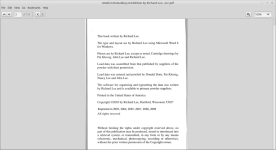I have to agree with nearly every reviewer, high and low. This book is a mixed bag and delivers some pretty strong pros and cons.
Pros:
1. This is great for a beginner, but not for obvious reasons. Because this seems to be an advertisement for Lee in its entirety, the novice will find themselves confused about certain reloading techniques, or specific "opinions" offered throughout the narrative. Due to this confusion, the reader will undoubtedly need to do more research on their own and thereby better enrich their knowledge prior to reloading.
2. This is also good because Lee is simply a good brand. They produce cheap, high quality reloading tools which can be easily replaced and are highly effective. That said, the advice given in this book is very much like sitting down to lunch with an old friend who's been reloading for decades. You don't necessarily get everything you need, but you get a good start. Those are the good things; the narrative and subject matter are approachable and the book acts as a springboard for further reading.
Cons:
1. Because this is an advertisement, you find yourself getting hung up on innocuous opinions, or confusing chapters. Moreover, I was particularly frustrated with the resizing information as the narrative seemed to jump back and forth between Full-Resizing and Neck-Expanding. These are two completely different terms (dies/procedures/etc) but the book never really goes into any depth about the difference, or the instances in which you would resort to one or the other. I believe you will find that's the case with a handful of terms throughout.
2. As some others have mentioned, the reloading data is AMAZING for exotic loads, but pretty basic for popular loads. Don't get me wrong, if you're reloading .30-06 or .45 ACP, you'll find some basic loads you're looking for, but this is most certainly not the end all say all on charging. Also, Lee goes back and forth between Grains and CCs, which can be distracting at best. This leads us back to our "This book is an advertisement" problem because Lee happens to sell an inexpensive collection of CC scoops, and thus the necessity to describe everything in CC and grains.
Overall, this book is handy to have on your shelf, especially for the data on exotic loads. In fact, I think the loading data is really the most useful aspect of the book because the charts are straight forward and the diagrams included are easy to read. Also, the price on this book is perfect, falling under $20 and acting as a good starting point. I think any good reloader is going to tell you to buy at least two reloading handbooks anyway, so this should be one of them. If you can overlook the blatant advertising, limited data and occassional back-and-forth between jargon (CCs/Grains, Expander/Resizer, etc), then this could be a great first book.




